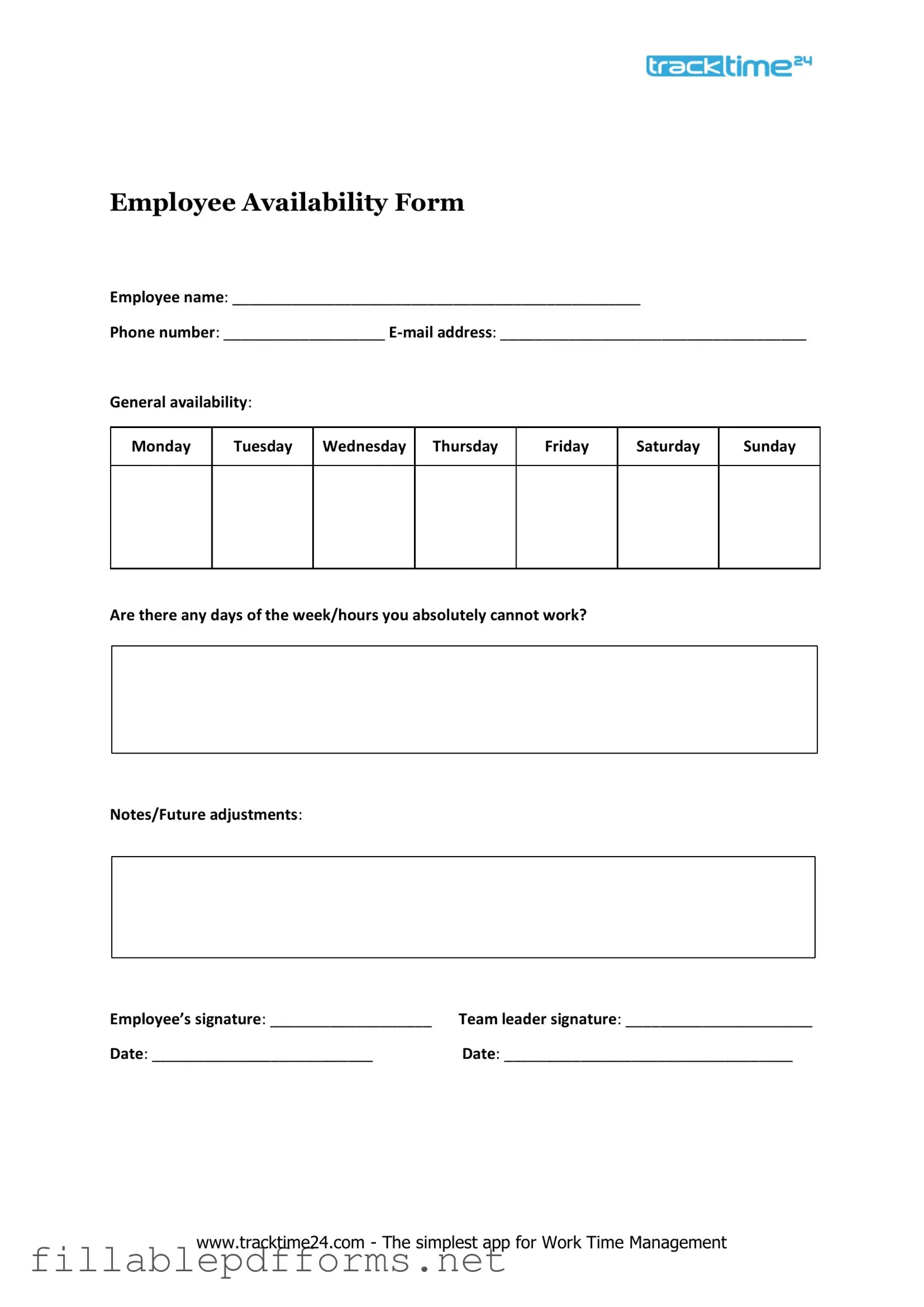The Employee Availability form serves as a crucial tool for both employers and employees in managing work schedules effectively. This form allows employees to communicate their preferred working hours, days off, and any other scheduling constraints they may have. By providing a structured way to express availability, it helps employers make informed decisions when creating work schedules, ensuring that staffing needs are met while also accommodating individual preferences. Additionally, the form may include sections for employees to indicate any special requests, such as shifts they prefer or times they are unavailable due to personal commitments. Having a clear record of employee availability not only enhances workplace efficiency but also promotes a positive work environment by respecting the needs of the workforce. Overall, the Employee Availability form is an essential component in fostering effective communication between employees and management, ultimately contributing to a more organized and responsive workplace.
